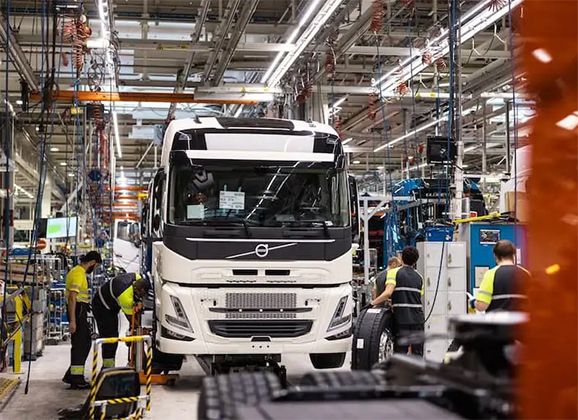But there is more on the PLM agenda: As PLM&ERP News previously reported, in addition to the decision to consolidate operations on PTC software, that the group also has installations with software from Dassault Systèmes, SAP, Ansys, ESI and Siemens.
Regardless of what happens with the software setup for industrial IT support in the Monterrey facility, it is generally true that PTC on the PLM side and in parts on the production side has ended up in something of a ”pole position.” This is also reflected in Volvo Group’s position as one of PTC’s largest global customers.
3D model driven development
This can, among other things, be traced back to PTC’s ability to create and manage 3D digital twins of manufactured products as well as this PLM player’s development of, or purchase of (such as the German Codebeamer), software capable of deriving manufacturing and service information such as mBOMs (manufacturing Bill of Material) and eBOMs (engineering BOM), routing plus manufacturing and service work instructions – even in immersive 3D augmented reality environments – from the digital mockup. PTC calls this concept ’3D model driven’.
But the company has also in recent years developed a special PLM-related adaptation for companies, such as Volvo, that rely on configure-to-order or platform strategies. Newer versions of PTC software can automatically configure 3D digital twins to match the variant configuration ordered by Volvo’s customers and then generate variant-specific 3D manufacturing and service information to match this. ”The approach enables an efficient approach for any build-to-order company and is the only practical way for such a company to leverage 3D data for manufacturing and service,” former PTC exec Jim Heppelmann said in a previous PLM&ERP News- interview.
KOLA’s central role
But none the less: KOLA is there as a foundation in the PLM setup. What is the role distribution between this product and configuration database and the PTC cPDm system Windchill?
One aspect here is that Volvo has long relied on KOLA to generate order configurations and then drive related sales and manufacturing processes. It has been the key to Volvo’s high growth and profitability. But as Heppelmann pointed out in the same interview as above: ”The common goal of PTC and Volvo has been to connect KOLA to Windchill in a way that KOLA can continue to own and process the configuration logic that drives each variant, but then Windchill in turn can generate 3D engineering models plus manufacturing and service deliverables to match the order configured in KOLA.”






